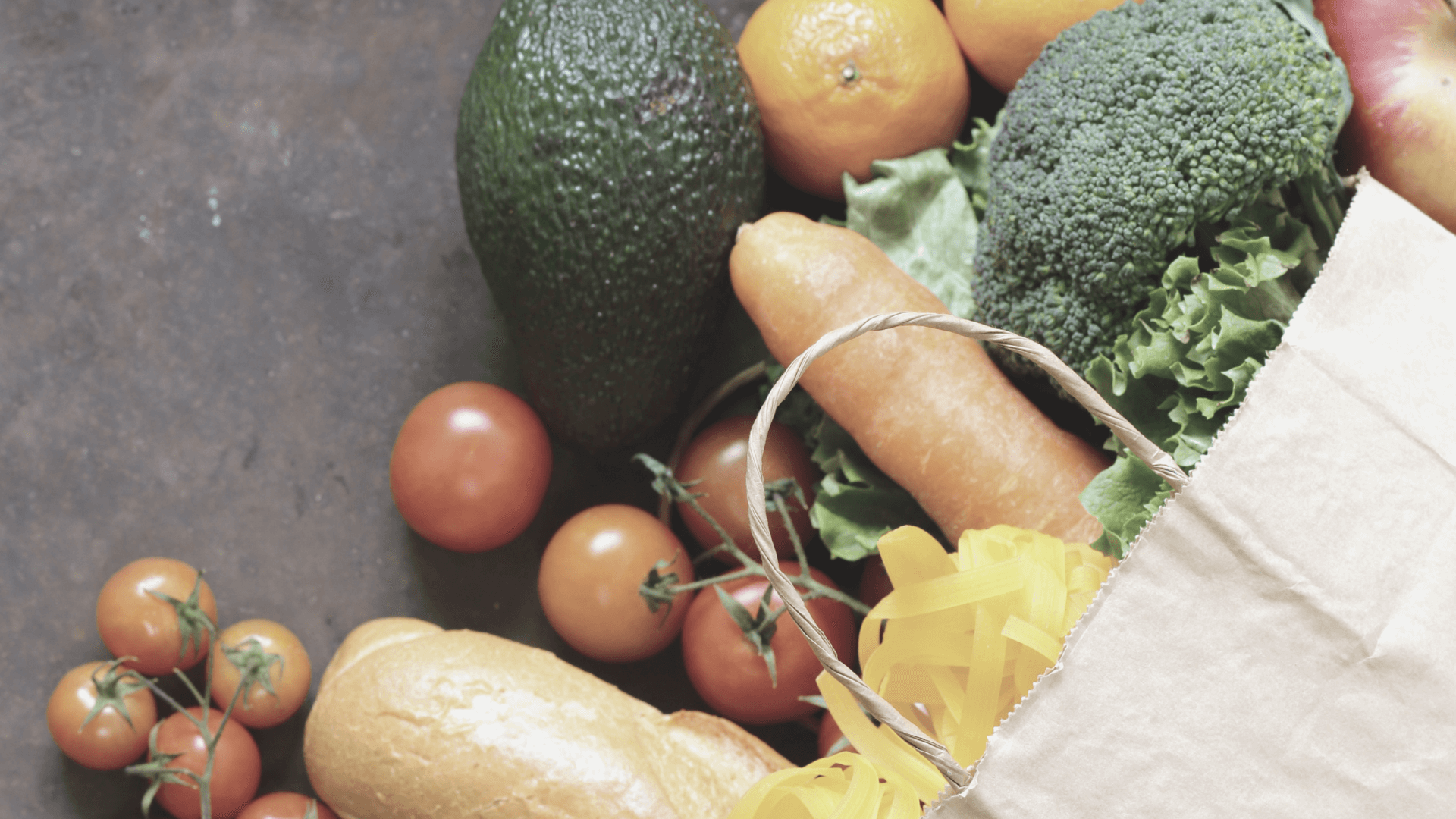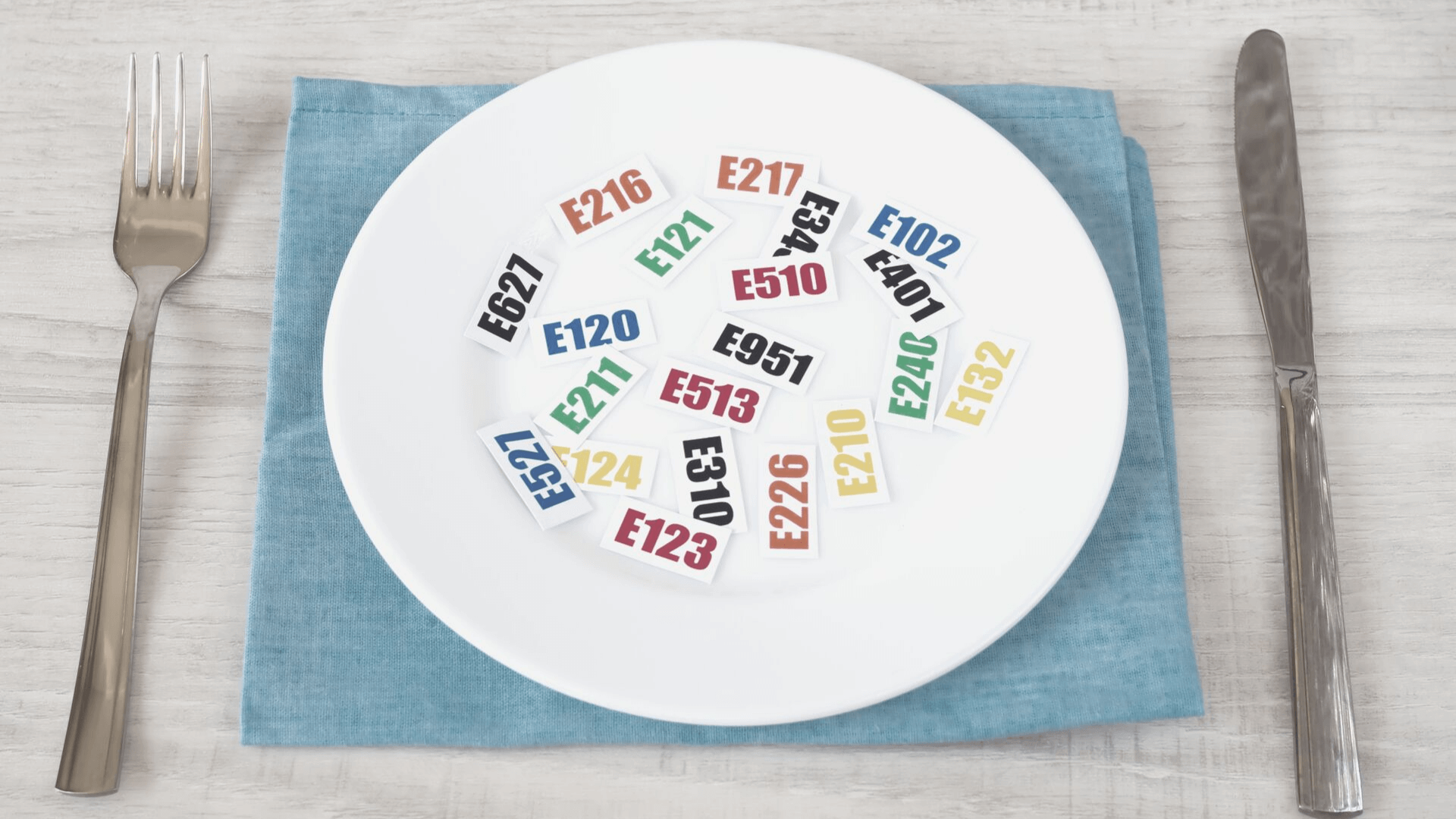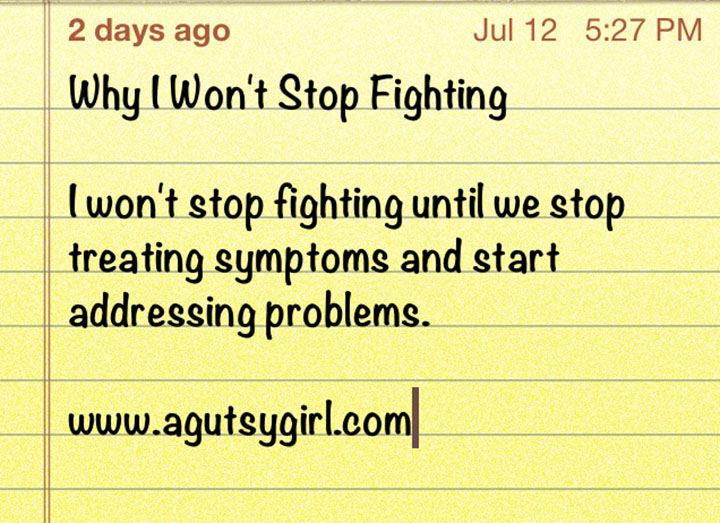When it comes to the foods you’re eating, is cross contamination important to pay attention to?
This is something I always wondered about on my healing journey.
It’s also something I get asked about frequently.
To help you answer the question for yourself, I’m breaking it down simply today.
Cross Contamination
Click HERE to save this post for later.
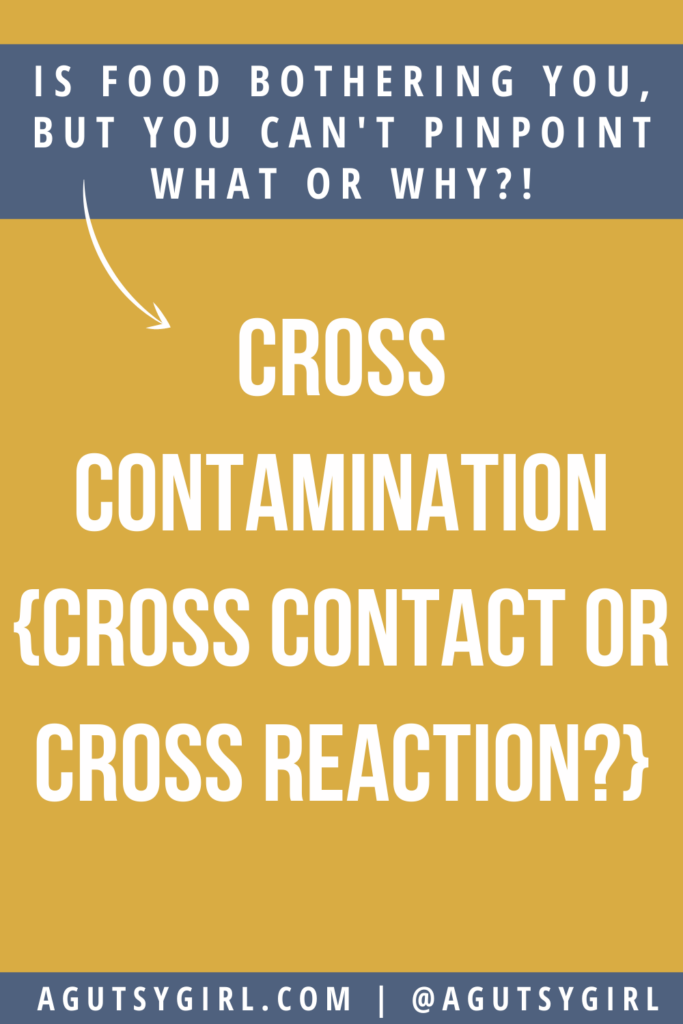
Let’s first hone in on the simple, basic definitions.
Cross-contamination
….is when harmful bacteria are transferred to a food from another food or surface. Most dangerous bacteria can be killed through proper cooking.
Cross-contact
….is when the food allergen or gluten is transferred to a food meant to be allergen- or gluten-free. A key difference is that offending food proteins remain dangerous after cooking.
Cross-reactivity
…. in allergic reactions occurs when the proteins in one substance (typically pollen) are similar to the proteins found in another substance (typically a food). For example, if you are allergic to birch tree pollen, you may also find that eating apples causes a reaction for you.
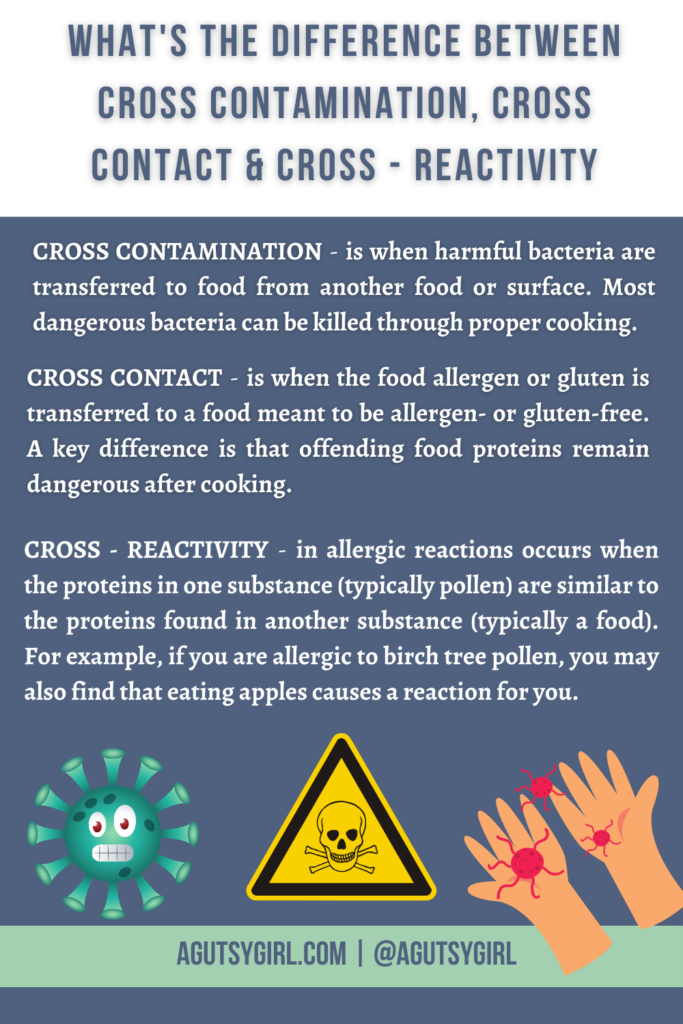
The reason it was important for me to break the three down for you is because so often we say, “cross contamination” when that’s not really what we’re referring to or concerned about.
Therefore, the first step is understanding which one you’re most concerned about for your healing journey.
It might be all three, but the distinction is still important.
Let’s dive in a little more on all three.
Cross Contamination
I will spend the least amount of time on this one because to be honest, for the purposes of your healing journey, it’s probably what you are least concerned with.
According to the government’s Food Safety Program,
Cross-contamination is the unintentional transfer of microorganisms, chemical contaminants (including allergens) or any foreign substance from food, person, or object to another food product.
It usually occurs from raw foods to ready-to-eat products (RTE) or between products that contain allergens and allergen-free products.
Cross-contamination can cause food poisoning when harmful bacteria are transferred to RTE products that do not undergo further processing to eliminate bacteria.
In other words, this is more food-safety related. It’s talked a lot about in the restaurant industry, and believe me I know that because I am a co-owner of a restaurant in Minnesota called The Bar on Main 🙂
Anyways, when we’re talking about answering the question, “Can I have this food if I don’t tolerate gluten?” cross-contamination is not the place we focus.
So let’s move on to the other two that are more likely to answer that question.
Cross Contact
Cross contact is important if you are allergic to a food or even have a very strong reaction to it.
It is a process whereby an allergen is accidentally transferred from one food to another.
The contact between these two foods means that their proteins mix and, as a result, each food then contains a small amount of the other food.
Proteins are very small and cannot be seen by the human eye, just like bacteria. However, these proteins could be fatal for someone who is allergic to them.
Cross-contact can occur at different stages of the preparation process, from storage to handling and right through to serving.
Here are some concrete cross contact examples:
- Storing gluten-free pasta in a jar that has previously had normal pasta in.
- Baking cookies on a baking tray and then using it to bake dairy-free cookies.
- Using the same tongs to handle fish as you use to handle vegetables.
- Failing to wash your hands after handling nuts.
- Using a knife to spread peanut butter, not cleaning it properly, and then using it to spread jam.
Where and how you are most likely to hear about it in this community is with gluten.
If you have Celiac disease and you go into a restaurant and ask if the toast is gluten free, they are very likely to say,
Yes, the toast itself is gluten free. However, we cannot confirm that it’s safe for those with Celiac disease because it shares a common toaster with gluten-containing bread.
That is cross contact, and if you have Celiac it absolutely matters.
NOTE: If you do not have Celiac and are concerned with cross contact, you might want to check out my article on Gluten Away HERE.
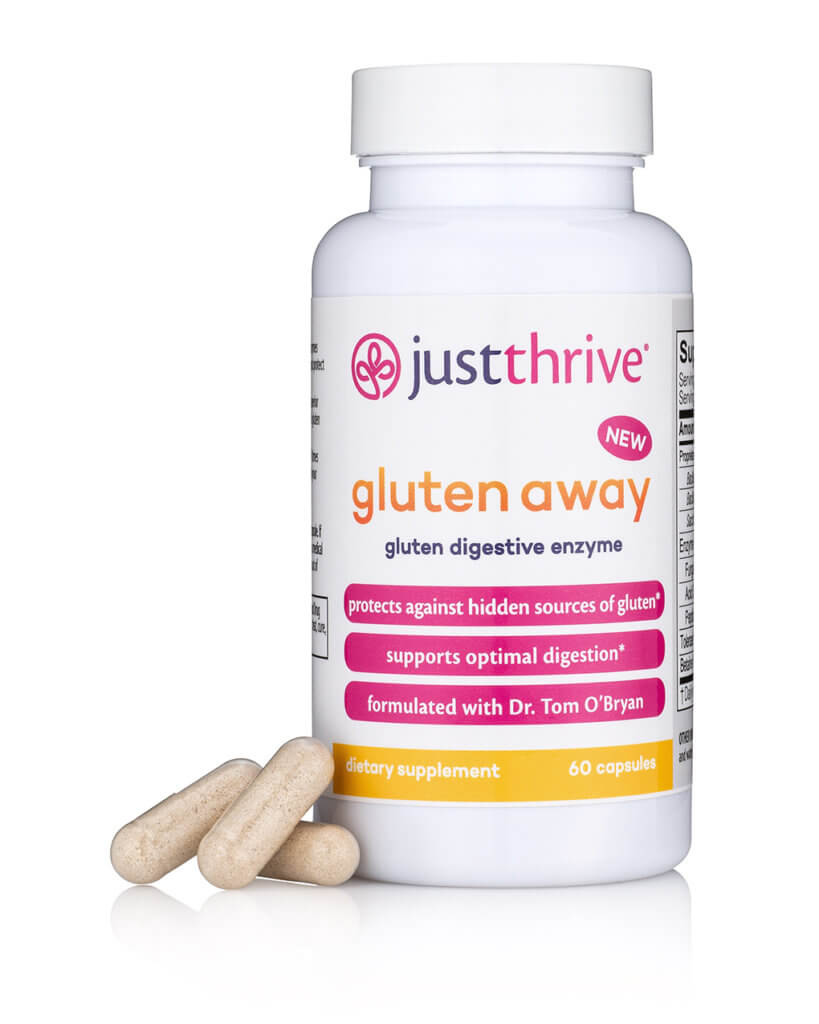
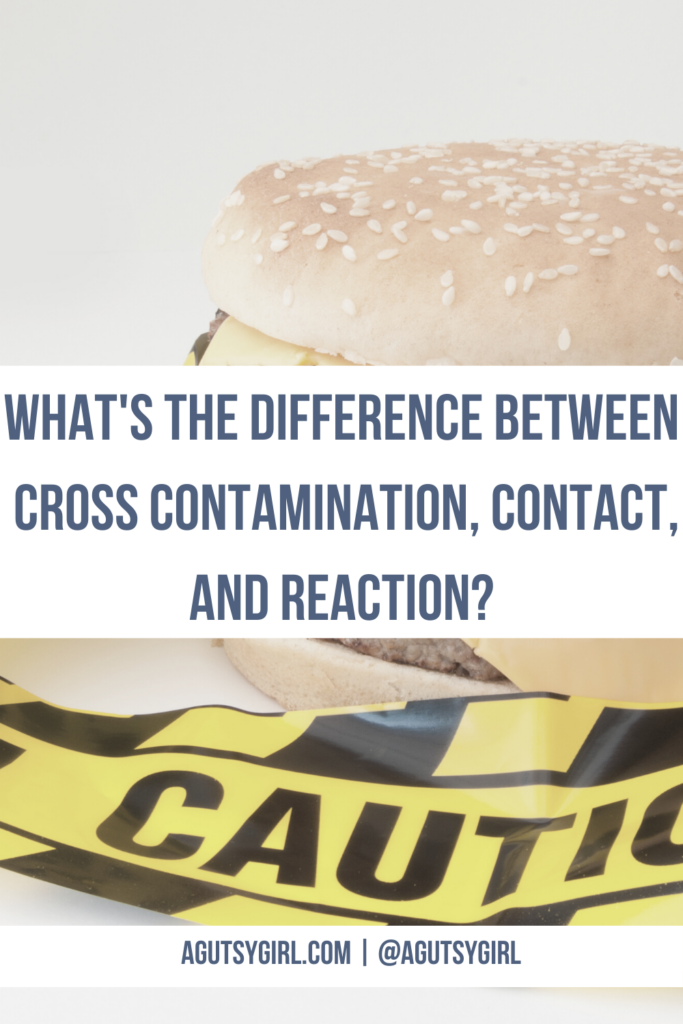
Cross Reactivity
And finally, cross reactivity.
Cross reactions is a topic I thought a lot about on my journey.
In fact, I have written about it multiple times on this website over the years. Most of the time when I talk about any specific food allergy (and even sometimes intolerance), I’ll also talk about the cross reacting foods.
For example, if you have a Strawberry allergy, you might also react to peaches, cherries or apples. In addition, you may have pollen allergies or hay fever.
The scientific definition of cross-reactivity lays out as such,
Cross-reactivity between antigens occurs when an antibody directed against one specific antigen is successful in binding with another, different antigen.
The two antigens in question have similar three-dimensional structural regions, known as epitopes, which allow the antibody for one antigen to recognize a second antigen as being structurally the same antigen.
Let’s talk about this in terms of gluten, which is, yet again, something most relate to.
Cross-Reactive Foods to Gluten
This happens when you are sensitive to a certain food that may not contain gluten but the body reacts into it as if it does contain gluten.
Here is a list of 23 cross reactive foods to gluten:
- Amaranth
- Buckwheat
- Chocolate (Milk Chocolate, Pure Cocoa, Dark Chocolate)
- Coffee (Instant, Latte, Espresso, Imported)
- Corn
- Dairy, i.e. milk and cheese (alpha-casein, beta-casein, casomorphin, butyrophilin, whey protein)
- Egg
- Hemp
- Millet
- Oats
- Potato
- Quinoa
- Rice
- Rye, barley, spelt, and Polish wheat (all of which, of course, are known gluten-containing grains)
- Sesame
- Sorghum
- Soy
- Spelt
- Tapioca
- Teff
- Wheat
- Whey
- Yeast
Sources: HERE, HERE, and HERE.

What to do?
Alright, so the million dollar question is,
What am I supposed to do with this information?
First, if this topic is important to you, you already likely know. However, if you suspect it’s relevant to you, but are not sure what to do next, here are my 4 best suggestions.
1 – Recognize its importance for your healing journey
Foods may not contain a certain ingredient that you’re trying to avoid, but if your body recognizes it as such it will react accordingly.
Due to this, you might experience inflammation and damage to your body.
Therefore, you’ll need to really pay attention to what you’re eating and what those foods mean (as a collective) for you.
2 – Track, track, then track some more
You must keep a meticulous food, lifestyle, and symptom journal. My 90-day gut healing journey journal was made for this!
Get the instant PDF download now or have us ship the spiral-bound, hard cover version right to your doorsteps HERE.
And p.s. once you start tracking, ensure you know the difference between ingredients vs ingredient(s). This is critical for this particular topic.
3 – Test
If I’ve said it once, I’ll say it 100 more times; test, don’t guess.
When in doubt, get tested.
There is a difference between an igG and an igE reaction. If you understand which type of reaction you have to any given food, you’ll also be able to understand the above a little more easily.
Whenever there is a baseline to go off of it makes everything else far easier to navigate.
4 – Make Changes
This final one sounds like, “Duh,” but you’d be surprised.
Nothing changes if nothing changes.
And if you know you’re reacting to a food because you have a dairy intolerance, but you’re eating it anyways, then nothing. will. change.
This last step ultimately puts the ball in your court. I’m not saying it’s easy because it’s not, but if you want to get better then that’s the only way possible.
If you liked this post, you might also enjoy:
- Food Intolerance or a Leaky Gut
- Why Can’t I Digest Eggs?
- How to Journal to Identify Food Intolerances
Xox,
SKH



